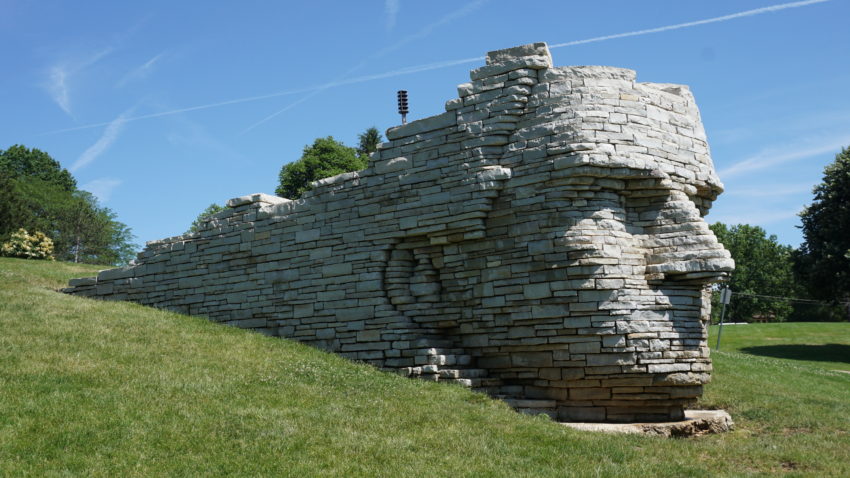The head of Wyandot Chief Leatherlips recreated with light-colored stacked stones rises from a grassy hill off of Riverside Drive in Dublin, Ohio. The Dublin Arts Council commissioned artist Ralph Hemlick in 1988 to create the monument. Over time exposure to the elements resulted in an accumulation of grime, mineral deposits, and biological growth; therefore, a stone monument maintenance cleaning was required. Marcin Pikus, Conservator of Stone Sculpture and Architectural Features, and Curtis McCartney, Conservation Assistant, traveled to perform the stone monument cleaning maintenance onsite.

The conservation treatment began by cleaning the stone with a biological solution to remove bio-growth film from the surface and grime. This is seen as areas of brown and green staining on the surface. Pressurized water was used to rinse the biological solution and clear any remaining debris. During treatment, the visual improvement is evident by removing surface debris.


Mineral deposits, small hard white deposits on the stone, were also present. These areas were treated with a dilute acid solution dissolving the mineral deposits. This part of the stone monument cleaning maintenance requires great skill so the stone is cleared of deposits, but it is not damaged by the acidic solution. The solution was thoroughly rinsed from the surface after treatment.
Another concern, as with any outdoor public work that is readily accessible to the public, is graffiti. Fortunately, the monument of Chief Leatherlips did not have extensive damage from public interaction like inscriptions or spray painted tags, but graffiti was still present.
During the conservation treatment, a tag in black permanent marker was removed with a commercially available stripper which was then cleared from the surface. It is often important to remove graffiti as soon as possible since it can potentially invite more vandalism.


After the stone monument cleaning maintenance, the surface of the stone is brighter and does not have stains from bio-growth film or dark areas from grime. In addition the surface is free of any graffiti. The treatment should last another 3-5 years until another stone monument cleaning maintenance is required depending on public interaction and weather conditions.

One can walk directly onto the head of the monument of Chief Leatherlips. The park where the sculpture is located is near the Scioto River, a river that runs through Central Ohio for over 200 miles. The Chief was executed near the area in the early 1800s by members of his own tribe, but there are many accounts of the story. In 1990, the monument by Hemlick commemorating the fallen Chief was installed at Scioto Park.

The artist Ralph Hemlick of Hemlick Sculpture is currently based in Newton, Massachusetts. He has created over 50 award winning public artworks in the United States of America and abroad. A portfolio of his dynamic public artworks can be viewed on his website.
